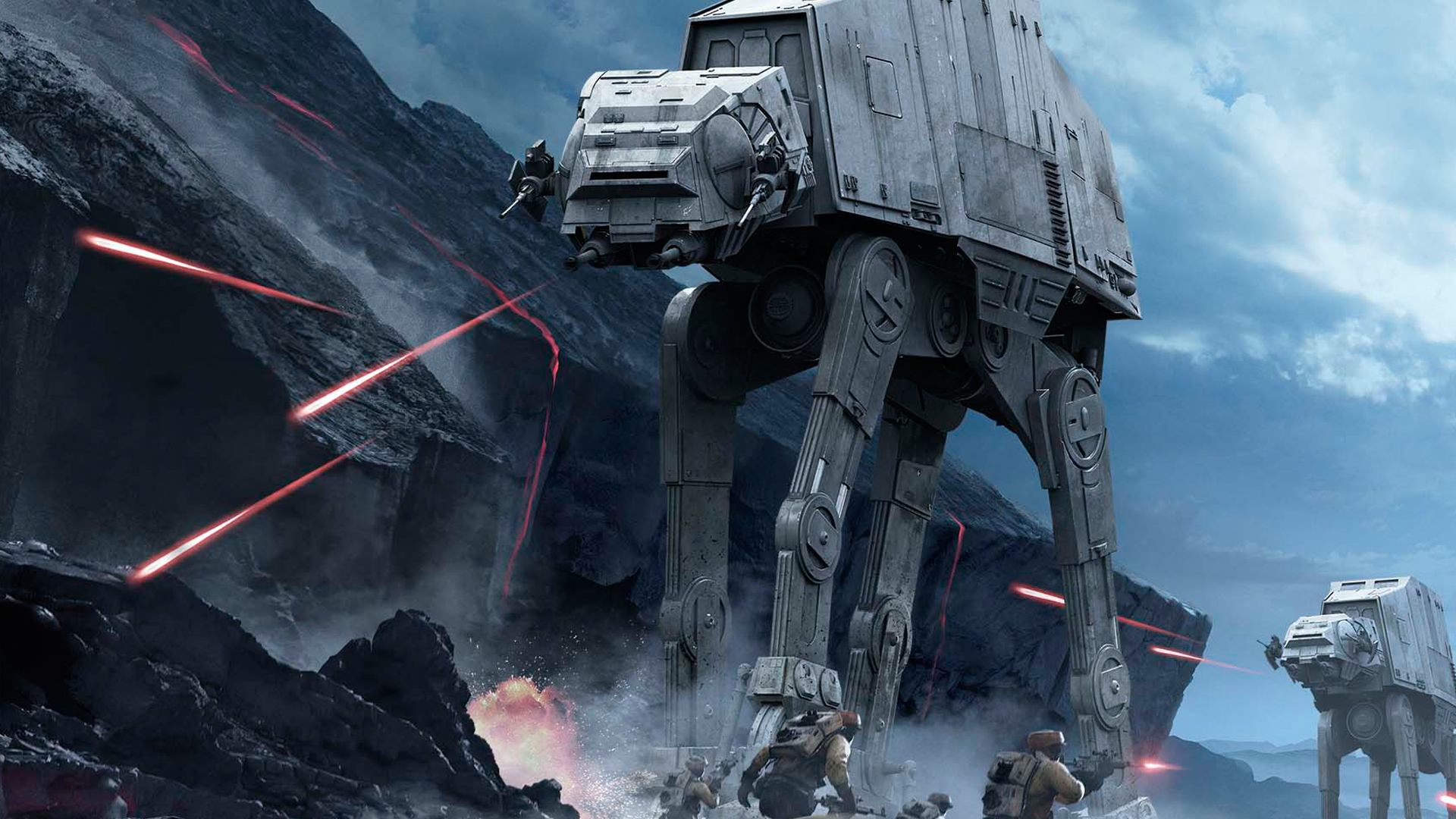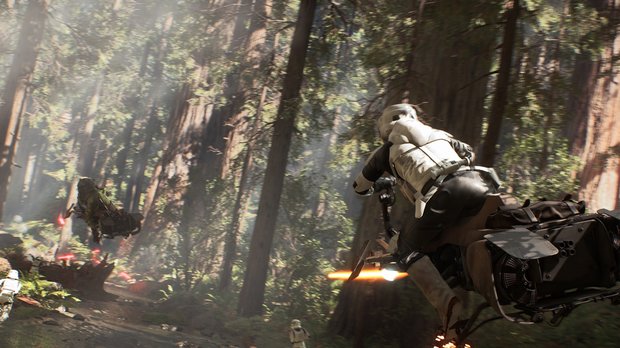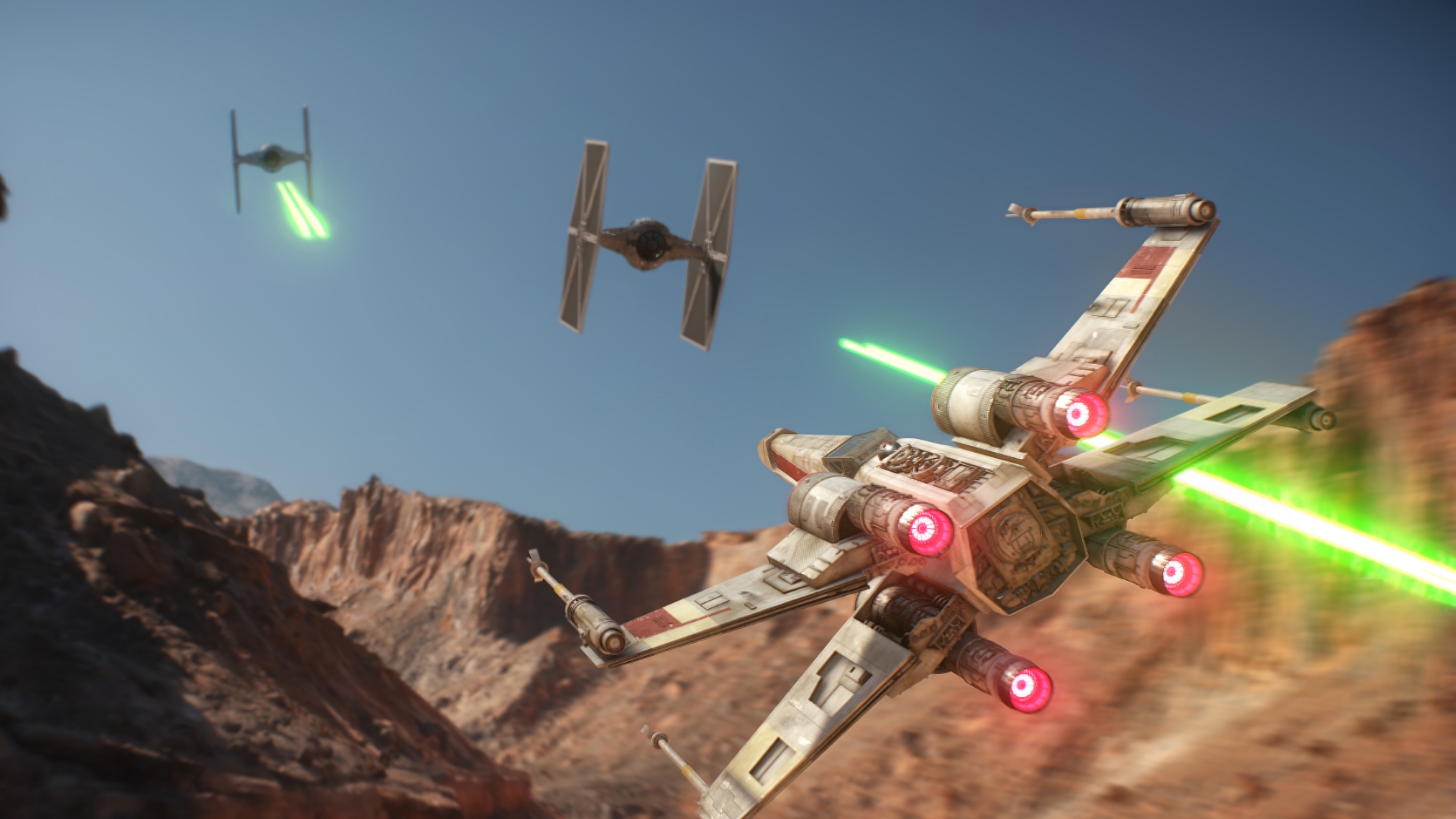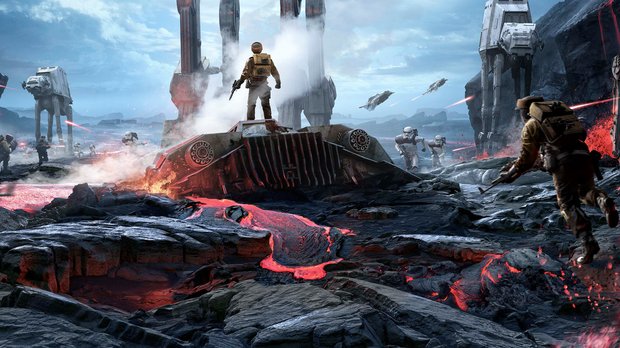Can DICEs Star Wars: Battlefront escape the same sad fate as Titanfall?
A long time ago in a galaxy far, far away, a loose alliance of developers and pundits pooled their intellectual resources, struck dramatic poses and declared that single player gaming as we knew it was at death’s door. This was and remains a bloody stupid idea, but the evidence back then (OK, it was only a few years ago) seemed decisive. “I have not green lit one game to be developed as a singleplayer experience,” observed EA’s Frank Gibeau, in a legendary boast from 2012. "Today, all of our games include online applications and digital services that make them live 24/7/365."

Four games in particular were poised to kick the old fire-and-forget campaign style to the curb: Bungie’s Destiny, with its promise of freebooters in capes teaming up ad hoc a million miles from Earth; Respawn’s Titanfall, with its “campaign multiplayer” and artfully unobtrusive cutscenes; Turtle Rock’s Evolve, whose online hunting grounds bubble over with delicious, nutritious AI; and Ubisoft’s Watch Dogs, in which every NPC you rub shoulders with could be another player in sheeple-skin clothing.
In practice, things haven’t panned out quite that triumphantly. Destiny continues to be a hit, as the 100,000+ Twitch viewership for the House of Wolves DLC reveal demonstrates, and Watch Dogs has sold extremely well, if more for what it shares with GTA and Assassin’s Creed than what it brings to the online table. But Titanfall has all but disappeared following a strong launch, despite generous injections of free content, and as for poor, brave Evolve? Dead in the water, exotic class mechanics and reviewer enthusiasm notwithstanding.
Into the breach sails EA and DICE’s Star Wars: Battlefront, a "multiplayer-first” shooter whose single player offerings consist, at the time of writing, of customisable one-off missions against AI bots, some of which share locations with the competitive modes. I went to check it out in Los Angeles recently and found the game to be an utterly spectacular display of nerdiness - perhaps the most impressive Star Wars adaptation to date, at least in terms of the attention it pays to details like the blast scars on an X-Wing’s chassis. The current shortage of single player options is worrisome, however, and a possible waste of the IP’s previous potential.

The case for boiling away traditional campaigns rests on the reasonably well-supported assertion that people don’t bother with campaigns any more. Famously, Respawn’s Vince Zampella argued in 2013 that only a modest percentage of FPS players play story modes to completion - a poor return on the months spent painstakingly arranging burned-out cars and shipping crates into chokepoints, or stitching together dialogue that goes unheard as players seize their chance to visit the loo.
The bang-per-buck ratio versus that of multiplayer is certainly damning - I’ve squeezed more from any single Battlefield game’s multiplayer than I have all the Battlefield campaigns put together - but here are a couple of things to bear in mind. Firstly, just because people don’t finish campaigns doesn’t mean they’ll happily buy games that lack them. Even the most resolute of multiplayer diehards thinks of the campaign as a kind of insurance, I suspect: you probably won’t need it, but it’s reassuring to know that it’s there, just in case the internet falls over.
Secondly, if people aren’t slugging it out till the credits reel, that could be because - shocker! - the single player modes in question are a bunch of old rope. Zampella’s previous beat, Call of Duty, has struggled with this for years, and the Battlefront reboot’s proposition feels a little like DICE throwing in the towel after failing to make an asset of Battlefield 4’s single player.
Weekly digests, tales from the communities you love, and more

This is depressing, because as any old fan will know, Battlefront was once home to a single player mode of surprising depth and stickiness - an eccentric blend of strategy and ‘bot battling known as Galactic Conquest. In brief, you’d take turns with an AI general to move fleets of ships around a small network of planets. Assaulting a planet or fleet would trigger a battle against AI grunts, and for every planet conquered, you’d get a bonus - Bacta Tanks for bonus health replenishment, extra spawn tickets and so forth - to deploy in a subsequent match.
As in the Total War games, the result was a pleasing back-and-forth between stately macro-management and the cut, thrust, boom and blast of combat on the ground. It was never as elaborate as Total War, of course, but it was quietly addictive - and probably quite efficient in terms of asset generation, because variety arose from novel remixes of the same guns, maps, classes and vehicles, rather than a costly new set of archetypes for each and every battle.
DICE’s Patrick Bach wouldn’t comment on the possibility of Galactic Conquest’s return when I asked, which is slightly suspicious given that he was perfectly happy to shoot down the idea of space battles. On the the other hand, no space battles rather cuts against the prospect of a mode built around interplanetary war, and only four planets have been unveiled so far, each supporting a number of maps. It’s hardly the foundation for a cosmic game of Risk.

The other way of looking at the variable fortunes of recent multiplayer-driven shooters is that if you want people to keep coming back to your game, you need to create a world that’s comfortable to inhabit. With Destiny’s undulating Martian deserts and Venusian mesas, Bungie has been able to preserve the trappings and, importantly, the freedom to set your own pace of a single player campaign. You can always just jog off into the wilderness if you don’t fancy company, scouring each planet for lucrative scrap, hints about the wider narrative or somewhere to race your Sparrow.
Titanfall obviously can’t offer the same sense of leisure, because it’s a competitive multiplayer-only affair. The game’s world is a work of similar imaginative density, Starship Troopers by way of Steel Battalion, but you’re never allowed to simply exist in it. That could be Battlefront’s problem too. The Star Wars universe, right through from the original trilogy to The Force Awakens, is a beautiful balance of the epic and the homely, its starships at once grandiose and grubby - as much habitats and backstory gestation chambers as they are instruments of war. In putting the spotlight (for the moment) on head-to-head, DICE runs the risk of reducing all that to a question of where you take cover.
Perhaps I’m being too gloomy. The license’s selling power isn’t to be underestimated, and the Force seems strong enough with the new game’s gunplay - blaster bolts peck showers of sparks from trees, AT-STs prance among boulders like arthritic cabaret dancers. But a part of me is concerned that, like Titanfall, the new Battlefront will start strong then swiftly run out of steam.


